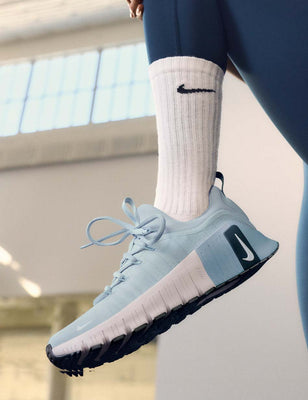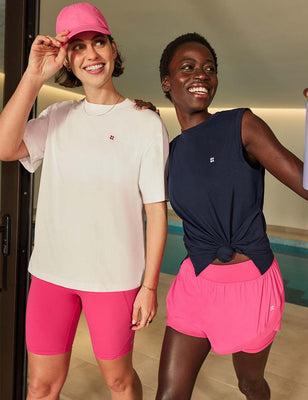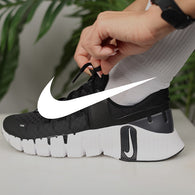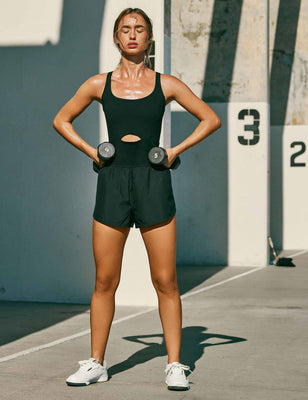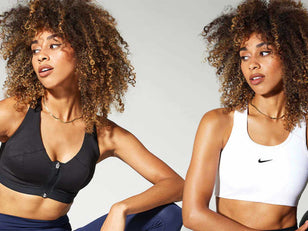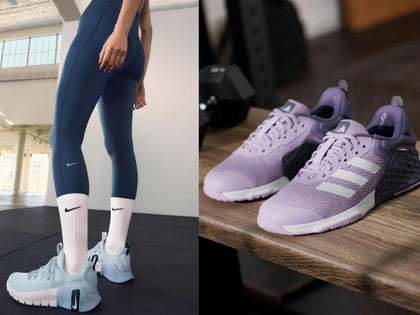Words by Ben Woodcock

A quick google search will tell you that High Intensity Interval Training (HIIT) is pretty much what it says on the tin: “A form of exercise in which short periods of extremely demanding physical activity are alternated with less intense, often shorter, recovery periods.”
You've probably seen the term "HIIT" around in the fitness world for some time now. It's gained popularity for its accessibility and its many benefits – but let's take a closer look at these. What exactly is HIIT, what are its benefits, and how do you get started?
What is HIIT?
It’s a Cardiovascular form of exercise that focuses on working in different heart rate zones to improve your fitness. Typically, a HIIT workout will last between 10 and 30 minutes, while for some elite athletes HIIT only stops when they are too exhausted to muster another thirty second interval.
Sounds intense? Don’t write it off just yet, as for beginners the limits don’t need to be so extreme. The sense of accomplishment and endorphins that goes hand in hand with completing even a small HIIT session is definitely worth it and it makes a refreshing change from the machines and free weights at the gym.
HIIT can be done at the gym, but you can also do it at home, outdoors or on holiday, which makes it a super versatile and accessible workout. No wonder it has become the go-to form of exercise for millions of people over the past year.

Benefits of HIIT Training
HIIT can be a free workout:
You don’t need a gym membership, nor do you need expensive items of equipment. Of course, if you find you enjoy HIIT as a way of working out, you might want to invest in a spin bike, a treadmill, or a rowing machine to mix your methods up. But, to start with, test out HIIT by road running or bodyweight exercises and that’s free, no expense needed! Of course, if you do want to take it up a notch, grab some resistance bands, sliders or ankle weights for an added challenge.
You can do it anywhere:
We’ve already touched on this a little bit. But if the gym isn’t your scene and you’d rather boost your endorphins in the open air then HIIT might be right up your street. Particularly over the summer if we’re blessed with good weather. Swap the squat rack for a run or cycle. If it’s done at high intensity and in intervals, you can do HIIT just about anywhere.
Perfect for beginners:
You certainly don’t need to have the physical capabilities of an Olympic athlete to be able to throw yourself into a HIIT workout. Nor do you need to have participated in sports or have an active background to start doing HIIT. If you are a complete beginner then take it slowly, start by doing 10 minutes of intervals before you build it up to slightly longer periods of intense work.

HIIT fits into a busy schedule:
HIIT can burn a high number of calories in a very short period. A study published in the Journal of Strength and Conditioning research showed that compared to weight training, running and biking, HIIT burned 25-30% more calories.
This study consisted of 20 seconds high intensity, 40 seconds low intensity and lasted for 30 minutes. This shows you can burn the same number of calories in a much shorter time by performing HIIT. So, you can squeeze your session in before work, after work or even during a lunch break if you’re lucky enough.
HIIT training helps your health:
Whilst the four benefits listed above all make HIIT convenient and appealing, let’s not forget the reason why you’re getting yourself out of breath and in a severely sweaty state to begin with. You’re doing it to help you and to help you be healthier. HIIT can in fact help you burn calories once you’ve got off the spin bike or put your running shoes away for another week.
A study in the applied physiology, nutrition and metabolism journal states HIIT has the ability to increase your metabolism for hours after just a 20-minute session, the study also hinted that it can help cut fat as the body uses fat for energy rather than carbs.
While HIIT helps with fat loss, it might also see you gain a couple of pounds in muscle mass in areas used most, such as the legs during running and cycling. Other health benefits include a reduced heart rate, blood pressure and an improved ability of the muscles to use oxygen. One study found that five weeks of HIIT workouts performed four days per week for 20 minutes each session improved oxygen consumption by 9%, as much as traditional endurance training but in about half the time.

Examples of High Intensity Interval Training Exercises
Because HIIT is as much a training principle as a form of exercise itself, there are endless exercise examples you can jump into. If you do happen to have a spin bike or an exercise bike at your disposal either at home or at the gym, then try 20 seconds pedalling as fast as possible with a one/two-minute rest if HIIT is new to you. If you feel this is too easy then try 20 seconds high intensity followed by 40 seconds low intensity and keep chipping away until you reach the point where you can comfortably go 30 seconds fast, 30 seconds slow for 15-30 minutes.
If the spin bike isn’t for you and you’d rather spend your time running, then use the same interval split on a treadmill, or while running outdoors. Alternatively, if your aim is to build lean muscle while keeping up with your cardio goals then perform a series of different exercises such as burpees, press ups and squat jumps, as many as possible in rotation, 20 seconds on, 40 seconds off for 15 minutes for example.
The great thing about HIIT is you can taper it to suit you, it caters for just about any level of fitness and every goal in the book.

3 Tips For Maximising Your HIIT Workout
Make sure you’re in the right headspace
HIIT isn’t the type of training you can head into half-heartedly. It’s all in or nothing, so make sure before you begin you feel ready to give your heart and soul to the bike, treadmill or dumbbells for the next 15 minutes or so.
Get the warm-up and cool down right
Due to its nature, HIIT is extremely demanding on the muscles you use most which is usually the legs. Whatever form of HIIT session you chose to do, spend 10 minutes warming up by performing specific stretches and a pulse raising activity such as five minutes low intensity cycling, to help avoid unnecessary injury. Also spend a few minutes afterwards exercising at a low intensity to slowly bring your heart rate back down to rest as well as stretching out any aching limbs.
Wear the right kit
It sounds obvious but breathable clothing is essential. Inevitably, at some point during your session you will begin to sweat profusely so wearing light and breathable kit certainly makes you feel better about yourself while doing HIIT. Also, to replace the fluids and electrolytes you’re bound to lose, ensure you have adequate water to sip on during rest/low intensity periods.
Conclusion
HIIT is significantly different from other forms of exercise. It brings the same benefits as endurance training, but in a much shorter space of time making it perfect in a world where we all have endless commitments which often make exercising secondary at best. If this sounds like you and want to get active, give HIIT a try!



